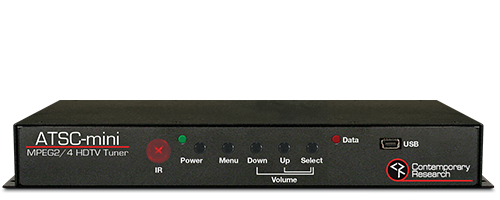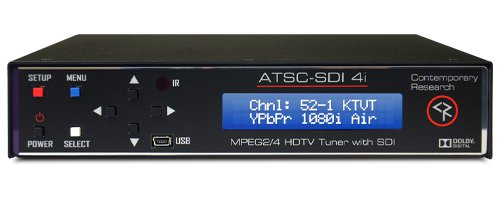Contemporary Research Celebrates the 10 Year Anniversary of its First Digital HDTV Tuner
Feb. 15, 2017The Telecommunications Act in 1996 initiated a major transition for both broadcasters and TV technology manufacturers. Analog TV channels would become obsolete as digital HD programs were required to replace them by January, 2007. Even when the deadline was later extended to June 12, 2009, Contemporary Research foresaw the necessity of high-quality digital tuners.
With the goal of manufacturing premium HD tuners in Dallas, Texas, Contemporary Research produced the ATSC-series. Domestic manufacturing contributes to the success of this series by offering quality, performance, and reliability unmatched by foreign producers. In fact,10 years from its introduction, the ATSC-series remains the only line manufactured in the United States!
On January 22, 2007, Contemporary Research released its 232-ATSC HDTV tuner to rave reviews and set many industry firsts. Here is an excerpt from a press release detailing many of the product features:
“It’s the first truly universal tuner, receiving ATSC, NTSC, and clear QAM channels from switchable cable and off-air inputs. The 232-ATSC is also the first HD tuner that simultaneously outputs digital HDMI, HD analog RGB/Component, and composite video - as well as digital HDMI, coax, and optical audio, plus analog stereo. Controllable by 2-way RS-232 and discrete IR commands, the tuner fits easily into system racks, requiring only two spaces for two-across mounting. Other features include closed-captioning, on-screen setup and user menus, included IR remote, and available AMX and Crestron program modules.”
Part of a deficit reduction plan, the Telecommunications Act triggered the sale of channels 52-69 to cell phone providers and initiated other rules that impacted businesses in the United States. These changes almost ended domestic manufacturing of TVs and tuners completely. Almost.
“As pioneers in creating integration-friendly HDTV tuners, we have a long list of great ideas from industry pros. Rather than select a few features, we added everything in the 232-ATSC,” said Contemporary Research President, Scott Hetzler. After ten years on the market, the 232-ATSC is still one of Contemporary Research’s favorite products.
Over the years, it has become common for integrators to daisy-chain up to nine 232-ATSC series tuners from a single RS-232. Certainly an effective solution, the cabling requirements can be complex, however, and maintenance on a single tuner can temporarily break the chain and thus throw other tuners offline. In response, IP control is supported by both the previous 232-ATSC+1 and current 232-ATSC 4 tuners, which allows the control of a near limitless number of tuners and other IP controlled devices without the daisy-chain drawbacks. Additionally, it is an economical solution with and easy installation process!
The 232-ATSC tuner has been a nationwide success, delivering high definition video for flat panel monitors and video projectors, with connection options from HDMI, SPDIF optical and coax, and stereo audio ports. The 2007 unveiling of the 232-ATSC tuner, featuring HDMI, RGB, and Component HD outputs, is a prime example of the deep commitment to innovation that fuels the dedicated team at Contemporary Research.
Ready to learn more about the Contemporary Research team, our services, and successful partnerships? Visit us online and contact us directly at contemporaryresearch.com today!

232-ATSC 4K HDTV Tuner
The 232-ATSC 4K HDTV Tuner, the 5th-generation ATSC HDTV tuner from Contemporary Research, adds new capabilities to the industry-standard ATSC series.

ATSC-mini HDTV Tuner
The ATSC-mini is an HDTV Tuner designed for use with HD and UHD video displays and projectors in a distributed CATV system. Housed in a new, smaller low-profile enclosure, the unit with built in mounting wings can be attached flush to walls or displays.

ATSC-SDI 4i HDTV Tuner
The ATSC-SDI 4i HDTV Tuner, the 3rd-generation SDI tuner from Contemporary Research, adds new capabilities to the industry-standard ATSC series tuners with SDI.
